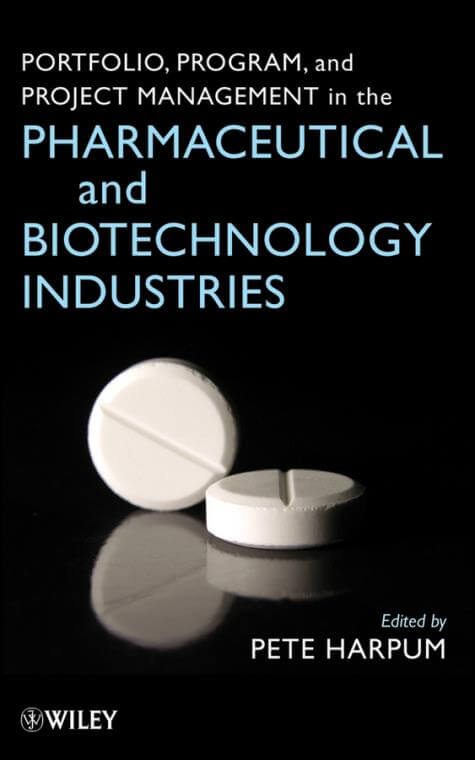Introduction

The pharmaceutical industry plays a crucial role in global healthcare, providing essential medications that improve and save lives. Within this industry, generic pharmaceuticals are particularly important due to their affordability and accessibility. Generic pharmaceutical portfolio management involves the strategic oversight and coordination of a company’s range of generic drugs, ensuring they meet market demands, regulatory standards, and financial goals.
Generic drugs are chemically identical to their branded counterparts but are sold at a fraction of the cost, making them a vital component in reducing healthcare expenses. They account for a significant portion of prescriptions worldwide, driven by the expiration of patents on branded drugs and the need for cost-effective healthcare solutions.
This article aims to provide a comprehensive understanding of generic pharmaceutical portfolio management. It will explore the history and evolution of generics, define key concepts, offer best practices, analyze case studies, discuss challenges and solutions, and look ahead to future trends. By the end, readers will have a well-rounded perspective on managing a generic pharmaceutical portfolio effectively.
Background and History
Origins of Generic Pharmaceuticals
The concept of generic drugs emerged as a solution to high medication costs associated with branded drugs. Initially, the pharmaceutical market was dominated by patented drugs, which allowed companies to set high prices due to lack of competition. The Hatch-Waxman Act of 1984 in the United States was a pivotal moment, facilitating the entry of generics by streamlining the approval process through the Abbreviated New Drug Application (ANDA)[2]. This legislation balanced innovation with competition, allowing generics to be marketed once a patent expired.
Key Developments Over Time
Over the years, several developments have shaped the generic pharmaceutical industry:
- Regulatory Frameworks: Countries worldwide have established regulatory bodies to ensure the safety and efficacy of generics, such as the FDA in the U.S. and EMA in Europe. These agencies require generics to demonstrate bioequivalence to branded drugs[1].
- Market Growth: The demand for generics has surged, driven by healthcare reforms and the expiration of patents on blockbuster drugs. By 2016, generics accounted for 89% of prescriptions in the U.S., highlighting their critical role in healthcare[2].
- Technological Advancements: Innovations in drug manufacturing and testing have improved the quality and availability of generic drugs, allowing for more complex formulations, including biosimilars[2].
Main Concepts
Core Ideas in Generic Pharmaceutical Portfolio Management
1. Bioequivalence and Bioavailability
Bioequivalence is a cornerstone of generic drug approval, ensuring that a generic product releases its active ingredient into the bloodstream at the same rate and extent as the branded drug. Bioavailability refers to the degree and rate at which the active ingredient is absorbed and becomes available at the site of action[1].
2. Regulatory Compliance
Generic pharmaceutical companies must navigate a complex regulatory landscape to bring products to market. This involves adhering to guidelines set by regulatory bodies, conducting clinical trials, and maintaining rigorous quality control to ensure safety and efficacy[1][2].
3. Market Entry and Competition
The generic drug market is highly competitive, with multiple manufacturers often producing the same drug. The first company to file an ANDA for a generic version of a branded drug can gain a significant market advantage through exclusivity periods[1].
4. Cost Management
Generic manufacturers operate on thin margins, necessitating efficient production and supply chain management. Cost control is essential to remain competitive while ensuring product quality and availability[2].
Significance of These Concepts
These concepts are crucial for the successful management of a generic pharmaceutical portfolio. They ensure that generics are safe, effective, and accessible, providing significant savings to healthcare systems and patients. By understanding and applying these principles, companies can optimize their portfolios to meet market demands and regulatory requirements.
Best Practices or Applications
Practical Tips for Managing a Generic Pharmaceutical Portfolio
- Strategic Planning: Develop a robust strategy that aligns with market trends and regulatory changes. This includes identifying potential drugs for development based on patent expirations and market needs.
- Quality Assurance: Implement comprehensive quality control measures to ensure compliance with regulatory standards and maintain product integrity[1].
- Supply Chain Optimization: Streamline supply chain operations to reduce costs and improve efficiency. This involves working closely with suppliers, manufacturers, and distributors to ensure timely delivery and availability[2].
- Market Analysis: Conduct regular market analyses to identify opportunities and threats. This includes monitoring competitor activities, pricing trends, and regulatory updates.
Real-World Examples
- Teva Pharmaceuticals: A leading generic drug manufacturer, Teva has successfully expanded its portfolio through strategic acquisitions and a focus on complex generics and biosimilars.
- Mylan (now part of Viatris): Known for its diverse range of generic products, Mylan has leveraged its global presence to capture market share and drive growth.
Case Studies
Case Study 1: Teva Pharmaceuticals
Teva Pharmaceuticals is a prominent player in the generic drug industry, with a portfolio that spans various therapeutic areas. The company’s success can be attributed to its strategic acquisitions, such as the purchase of Actavis Generics, which expanded its product offerings and market reach. Teva’s focus on complex generics and biosimilars has positioned it as a leader in the industry, demonstrating the importance of innovation and diversification in portfolio management.
Case Study 2: Sandoz
Sandoz, a division of Novartis, is another key player in the generic pharmaceutical market. The company has invested heavily in research and development to produce high-quality generics and biosimilars. Sandoz’s commitment to sustainability and access to medicines has strengthened its reputation and market position, highlighting the value of corporate responsibility in portfolio management.
Challenges and Solutions
Common Obstacles in Generic Pharmaceutical Portfolio Management
- Regulatory Hurdles: Navigating the complex regulatory environment can be challenging, with varying requirements across different markets[1].
- Price Erosion: Intense competition often leads to price erosion, impacting profitability and sustainability[2].
- Supply Chain Disruptions: Global supply chains are vulnerable to disruptions, which can affect the availability and cost of raw materials and finished products.
Strategies to Overcome Challenges
- Regulatory Strategy: Develop a proactive regulatory strategy that anticipates changes and ensures compliance. This includes engaging with regulatory bodies and staying informed about new guidelines and requirements[1].
- Cost Efficiency: Focus on cost efficiency through lean manufacturing practices and strategic partnerships with suppliers and distributors[2].
- Risk Management: Implement robust risk management practices to mitigate supply chain disruptions. This includes diversifying suppliers and maintaining safety stock levels.
Future Trends
Emerging Technologies and Approaches
- Digital Transformation: The adoption of digital technologies, such as artificial intelligence and blockchain, is transforming the pharmaceutical industry. These technologies can enhance drug development, manufacturing, and supply chain management.
- Personalized Medicine: Advances in genomics and biotechnology are paving the way for personalized medicine, where treatments are tailored to individual patients. This trend may influence the development of more targeted and specialized generics.
Predictions for the Field
The future of generic pharmaceutical portfolio management will likely be shaped by continued innovation and regulatory evolution. Companies that embrace digital transformation and focus on sustainability will be well-positioned to thrive in this dynamic industry. Additionally, the growing demand for biosimilars and complex generics will present new opportunities for growth and differentiation.
Expert Opinions
Insights from Industry Leaders
- Dr. Albert Bourla, CEO of Pfizer: “The generic pharmaceutical industry is at a crossroads, with the potential to drive significant healthcare savings through innovation and efficiency. Companies must focus on quality and compliance to succeed in this competitive market.”
- Kenneth Frazier, Former CEO of Merck: “Generic drugs play a vital role in healthcare, providing affordable access to essential medicines. The industry must continue to evolve and adapt to changing market dynamics and regulatory landscapes.”
Conclusion
In conclusion, generic pharmaceutical portfolio management is a complex but essential aspect of the healthcare industry. By understanding the history, core concepts, and best practices, companies can effectively manage their portfolios to meet market demands and regulatory requirements. As the industry continues to evolve, embracing innovation and sustainability will be key to success. By staying informed and proactive, companies can navigate challenges and capitalize on emerging opportunities, ultimately improving access to affordable medicines for patients worldwide.
Citations:
[1] https://www.laurengreenbergmd.com/uncategorized/generic-medications/
[2] https://accessiblemeds.org/sites/default/files/2017-10/AAM-Generic-Brand-Drug-Supply-Chain-Brief.pdf
[3] https://www.finance.senate.gov/imo/media/doc/37143.pdf
























